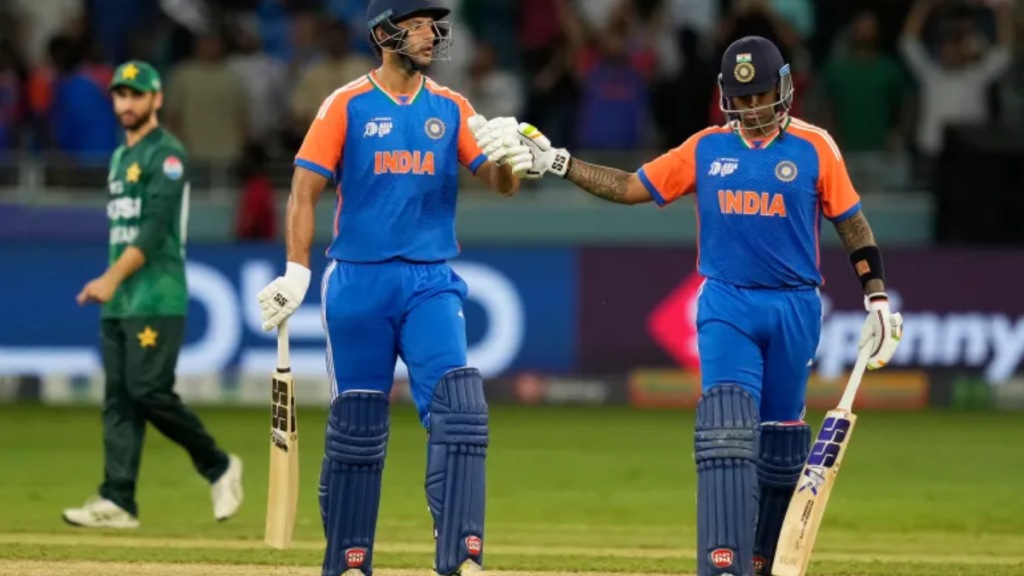A petty handshake scandal has stolen headlines, but the real gulf between India and Pakistan is structural: a deeper sporting culture, relentless fitness standards, clear pathways and superior planning.
The stage is set again. September 21 may bring another India versus Pakistan clash in the Asia Cup Super Four, but the conversation has drifted far from cricket. A simple ritual of respect did not happen, and that absence became a political lightning rod. What should have been a routine exchange turned into a full blown controversy that obscured the game itself.
The handshake controversy that shook the Cup
On September 14, minutes before the toss in Dubai, match referee Andy Pycroft was told by the ACC venue manager that the customary handshake between captains Suryakumar Yadav and Salman Agha would not take place. Pycroft, surprised, passed the message to avoid an awkward on-field moment. That decision made him the focus of an immediate PCB complaint, which demanded his removal and accused him of violating the spirit of the game. The ICC later cleared Pycroft, saying he had acted within his remit. The episode revealed more than a breakdown in protocol; it exposed how boards can weaponize theatre to redirect attention away from on-field failures.
Numbers do not lie
Remove the smoke and mirrors and the scoreboard tells the real story. Since 2024 India have lost only three of 33 T20 internationals, an extraordinary record that reads like the early chapters of an invincible team.
Pakistan’s recent record is far less flattering: 22 wins and 26 defeats in 49 games.
In T20Is head-to-head between the two teams, India lead 11 to 3. The recent Asia Cup clash was settled with little fuss. India coasted to a seven-wicket win, a performance that looked effortless on the surface but was built on preparation, discipline, and clear execution rather than noise off the field.
Ego, economics, and empty gestures
For broadcasters and rights holders, an India versus Pakistan fixture is the crown jewel. One match can generate more viewership and revenue than the rest of the tournament combined. That commercial reality explains why the fixture survives political chill. Yet the obsession with spectacle sidelines other teams.
The UAE, for example, waited through uncertainty because administrative theatrics between boards took priority over schedules and sporting fairness.
Meanwhile the BCCI’s refusal to exchange handshakes looks like a bid for patriotic optics, even as the same board benefits hugely from the commercial value of the encounter. Boycott when convenient, cash in when lucrative, then stage symbolic gestures for domestic audiences. That contradiction cuts through the rhetoric.
Fans and the social media circus
The rivalry lives because the audience fuels it. Social platforms erupt with calls for boycott and outrage, but the same feeds are addicted to every minor incident. A denied handshake becomes a trending story, clipped and amplified. Fans pledge to look away, then tune in more closely than ever. Players, willingly or not, are converted into symbols in a larger contest of pride. The result is a theatre where sport risks being reduced to a proxy for political scoring.
Why India is a powerhouse, Not because of politics but because of sporting culture
India’s superiority in recent times is not an accident nor a product of political theatre. It comes from concrete, connected systems that turn potential into performance.
From top to bottom the expectation is measurable. Modern Indian cricketers are subject to rigorous testing and year round conditioning. Fitness is treated as non-negotiable, not a headline stunt.
A young Indian player faces more high-pressure cricket before wearing the national jersey than ever before.
India’s strength today is rooted in how deep its cricketing ladder runs. A youngster may begin with a district or state team, move through the grind of domestic tournaments, and eventually find himself tested in the IPL, where there’s no place to hide. Every run and every mistake is magnified under pressure.
Around every young cricketer today is a web of guidance and support. There are academies keeping an eye out for raw talent, coaches working on flaws, and experts making sure players stay fit enough to handle the grind. Nutrition, sports science, even biomechanics are now part of the everyday routine. Over time, this steady mix of training and care shapes them into cricketers who arrive at the top level sharper, tougher, and better prepared than most of their opponents.
Selection is no longer about reputation alone. Workload is tracked, performances are measured, and planning stretches across formats and seasons. Players stay in the system only if they match the standards set, which keeps competition fierce.
Together these elements explain why India wins more consistently. It is a structural advantage, not a matter of gestures on the day.
What really wins?
History shows that legends are built by playing better cricket, not by performing political theatre. Kapil, Tendulkar, Wasim, Imran and many others earned mutual respect by letting their skill and temperament decide outcomes.
Today’s India wins because it runs further, prepares smarter and organizes better. Pakistan’s problems will not be solved by blaming referees or manufacturing controversies. They will be solved by rebuilding domestic foundations, investing in fitness and creating stable selection and development pathways.
The India versus Pakistan fixture will always be charged, and it will always be political in ways sport cannot fully escape. But if we care about cricket we must insist that the rivalry remains about runs, wickets and temperament. The handshake matter was a symbol. Symbols are important, but games are decided by skill and systems. Right now, those systems favour India.
